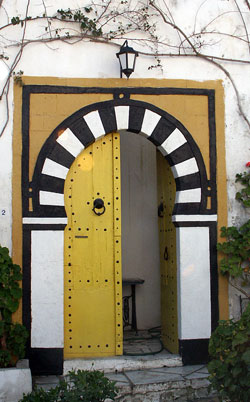
Cultural Spot ...
P l o v d i v in Bulgaria
Plovdiv is situated in southern Bulgaria and is referred to as the
"Heart of Bulgaria" due to its location roughly at the center of the
country. Plovdiv's history spans some 6,000 years, with traces of
a Neolithic settlement dating to roughly 4000 BC; it is one of the
oldest cities in Europe.
The city is known in the West for most of its history by the Greek
name “Philippopolis”. It was originally a Thracian before later
becoming a Greek and a major Roman city. In the Middle Ages, it
retained its strategic regional importance, changing hands between
the Byzantine and Bulgarian Empires. It came under Ottoman rule
in the 14th century. In 1878, Plovdiv was made the capital of the
autonomous Ottoman region of Eastern Rumelia. In 1885, it became
part of Bulgaria with the unification of that region and the Principality
of Bulgaria.
The City Hall of Plovdiv.
Plovdiv is often referred to in Bulgaria as "The City of the Seven Hills".
This is because the city has historically developed on seven syenite hills.
The earliest history of the city can be traced back to 6,000 BC. Some
With the establishment of Bulgaria in 681, Plovdiv became an important
border fortress of the Byzantine Empire. The city was captured by Bulgaria
for a short period of time. In the middle of nine AD, Plovdiv was reconquered
by the Byzantine Empire. Since then, Byzantine Empire was the major ruler
until the middle of the 14 century.



Plovdiv is often referred to in Bulgaria as "The City of the Seven Hills".
This is because the city has historically developed on seven syenite hills.
The earliest history of the city can be traced back to 6,000 BC. Some
excavated fine pottery and other objects of daily life in Plovdiv showing there was already an established settlement in the end of 4,000 BC
(Neolithic Age). At that time, the city was a centre of a trade fair.
The Virgin Mary Church.
In 342 BC, it was conquered by Philip II of Macedon (the father of
Alexander the Great) who renamed it “Philippopolis” – the city of Philip,
in his own honour. Later, it was reconquered by the Thracians who
called the city “Pulpudeva” (a reconstructed translation of Philipopolis).
After some back and forth struggles between the Thracians and the
Romans, in 46 AD, the city was finally incorporated into the Roman
Empire and was named as "Trimountium" (City of Three Hills). During
the Roman period, the city gained its status and became an important
crossroads for the Roman Empire. This was a period of growth and
cultural excellence. Roman writer, Lucian described Plovdiv –- "This is
the biggest and loveliest of all cities. Its beauty shines from faraway . . . ."
Khan Krum was the first Bulgarian ruler to capture Plovdiv.
With the establishment of Bulgaria in 681, Plovdiv became an important
border fortress of the Byzantine Empire. The city was captured by Bulgaria
for a short period of time. In the middle of nine AD, Plovdiv was reconquered
by the Byzantine Empire. Since then, Byzantine Empire was the major ruler
until the middle of the 14 century.
Armenian Apostolic Church St. George (Kevork) in the Old Town
Old Plovdiv
Ottoman Turks under Pasha Lala Shakhin seized Plovdiv in 1364. The city
was called "Filibe" by the Turks. During that period, Plovdiv was a major
economic center along with Constantinople, Odrin and Solun. The richer
citizens constructed beautiful houses, many of which can still be seen in the Architectural reserve Old Plovdiv. In the city was liberated from the
was called "Filibe" by the Turks. During that period, Plovdiv was a major
economic center along with Constantinople, Odrin and Solun. The richer
citizens constructed beautiful houses, many of which can still be seen in the Architectural reserve Old Plovdiv. In the city was liberated from the
Ottomans during the Battle of Philippopolis.
The Roman Aqueduct
With its long and multi-cultural history, Plovdiv has more than 200
archaeological sites. There are numerous museums, art galleries, and
cultural institutions in the city. Nowadays, Plovdiv is host to musical,
theatrical and film events, and also hosts the Plovdiv International Fair
annually.
archaeological sites. There are numerous museums, art galleries, and
cultural institutions in the city. Nowadays, Plovdiv is host to musical,
theatrical and film events, and also hosts the Plovdiv International Fair
annually.
